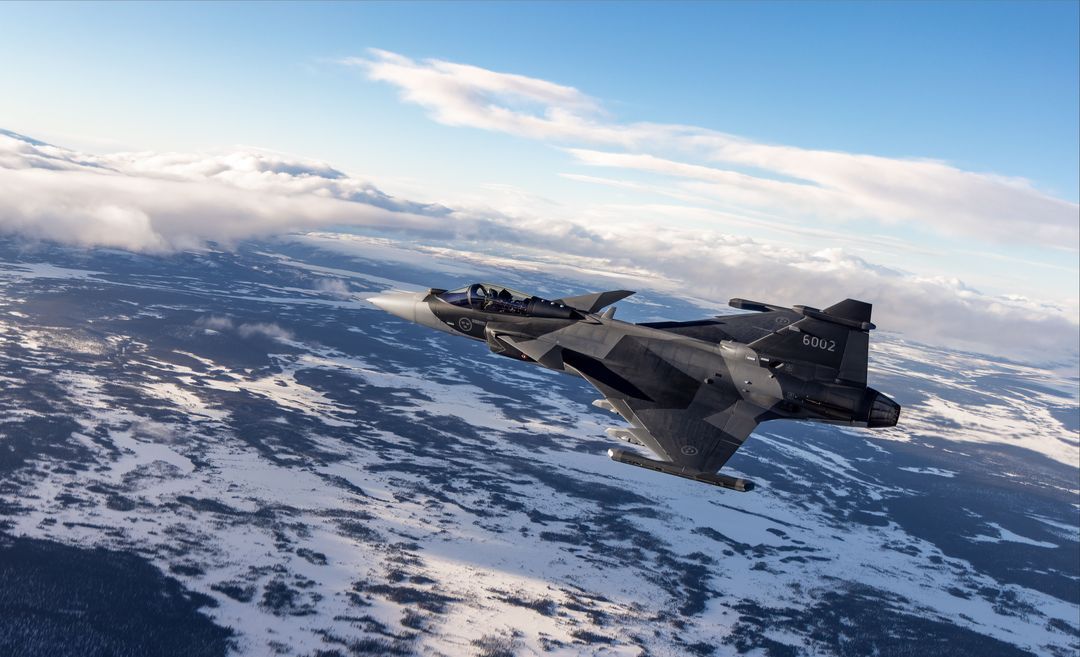Gripen is highlighted by analysts around the world as a perfect option for Ukraine to defend itself against the aggressor, Russia. What makes the Swedish-made fighter aircraft so attractive compared to others? Teknik & Säkerhetsforum turned to Jussi Halmetoja, flight operations advisor at Saab, and a former long-time pilot.
Sweden has built its defense systems based on an imagined threat from the large country to the east. Thus, when Saab developed the JAS 39 Gripen in the 1990s, it was against the background of the specific conditions required for Sweden to be able to defend its borders against an aggressor. The threat that Sweden could be exposed to required a special capability and has formed the basis for the development of the Gripen system.
“In the Air Force, we have for many years invested in dispersal tactics, i.e. being able to deploy our resources to road bases around Sweden at very short notice. This is something that is particularly distinctive for Gripen compared to virtually all other platforms.”
So says Jussi Halmetoja, a former Gripen pilot with a long history in the Swedish Armed Forces and FMV, and in recent years senior advisor and analyst at Saab’s business area Aeronautics. When Gripen is now mentioned as a suitable fighter aircraft for Ukraine to defend itself against the aggressor Russia, he sees it as a confirmation of Gripen’s ability in a concrete situation.
“The understanding of Gripen has emerged in a new way. The way we have dimensioned and designed Gripen is actually something that could be successful in Ukraine”, says Jussi Halmetoja.
Dimensioning and design are recurring concepts when the former pilot describes the thoughts behind the design of the Gripen system. The imagined enemy that Gripen will face is superior and has the ability to strike where, how and when it wants. And then we must be prepared, says Halmetoja.
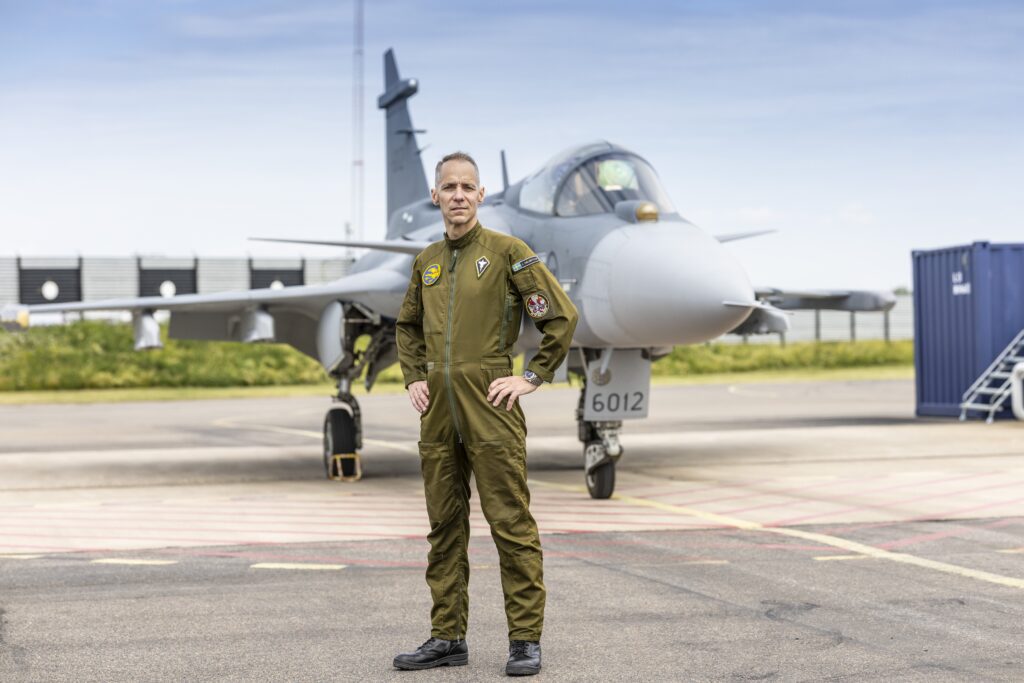
Must have smarter systems
“To be able to withstand the threat we are sizing up, our tactics and combat techniques are based on being able to maintain air superiority for short periods of time in small areas. Because we realize that we will not be able to have total dominance in the air all the time with the resources we have. And so we have to have better weapons than our opponents. We have to have faster and smarter systems, and better and smarter combat technology than they have,” he said.
The plane has been designed to be easy to maintain. It can be refueled and made ready for takeoff in 10-15 minutes, and it can take off and land on very short runways. Sweden has many small landing fields, although they were much more numerous in the past, and many forest roads around Sweden can serve as runways if they meet Gripen’s requirements of 800 meters runway length and 16 meters runway width.
“This is something that distinguishes Gripen from all other platforms today that need significantly larger landing fields to be able to land and take off. However, it is still the ability to operate from these dispersed locations over a longer period of time that is truly unique. It requires a very well-oiled organization, mindset and maintenance chain that is designed to work under severe crisis and war conditions.”
By comparison, the US F-16 aircraft in question for Ukraine needs at least twice the length, around 1,500-2,000 meters of runway, depending on the weapon, weight and cargo, to land and take off safely, according to Halmetoja.
The design philosophy behind Gripen also includes making the plane easy to fly. “If the predecessors Tunnan, Lansen and Draken were complicated to fly, Gripen is fairly easy to operate,” says Jussi Halmetoja. He considers the Viggen, which he has also flown, to be somewhere in between in terms of difficulty.
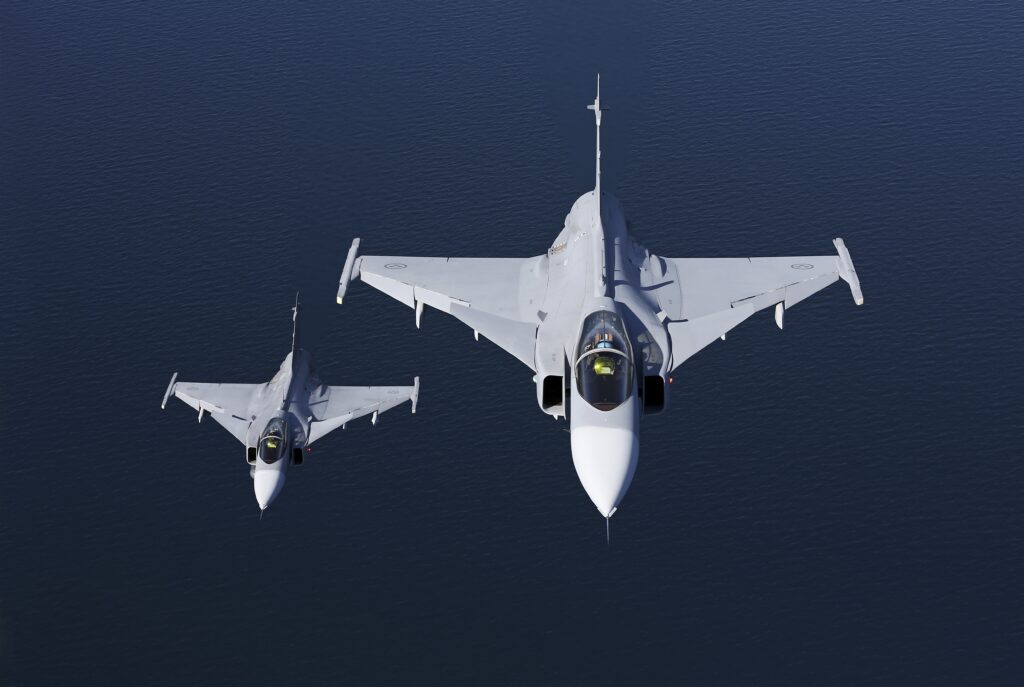
Connectivity and decision support
Instead of flying the fastest, highest and longest, the development of the Gripen system has placed great emphasis on connectivity, data links, information transfer and how the increasing amount of information is managed with the help of unique new decision support for the pilots in the cockpit.
“The development now and towards 2030 and 2040 is more and more about connectivity and information transfer over data links. About how we can transmit information to others, to all possible sensors in the battlefield, such as battle management, anti-aircraft, aircraft, and be able to receive information and use it.”
Another distinctive capability of Gripen is what is known in military parlance as a tele-warfare capability. According to Halmetoja, having an effective cyber warfare system is an absolute necessity in the current and future combat aviation environment.
With the help of tele-warfare, Gripen pilots can more easily identify and defend themselves against threats and make attacks on hostile sensors so that the opponent’s ability to see and identify is reduced. A group of four Gripen aircraft, for example, can use passive sensors, i.e. without having to use their own revealing radar radiation, to keep track of the air situation and send information to each other and position themselves. Telecommunications warfare can also disrupt the opponent’s battle management.
Telecombat system in a class of its own
“I would say with good confidence that here Gripen is in a class of its own and that today there is no other system that has such a tele-warfare system integrated into its platform as Gripen has. There are some that come close, such as the American F-35. But how we have built it in, and how we network all this functionality within, for example, a Gripen fighter group, no one else comes close”, he says.
The major challenge for today’s fighter aircraft is to handle all the information. Here, the former fighter pilot believes that Gripen has been gifted with a decision support system that allows the pilot to avoid spending so much time analyzing a lot of data. The data that is presented, he says, is the one that is important for the moment, while the rest is sorted out. It is about providing support to the pilot to be able to fly and fire weapons in an optimal way.
He describes it as a procedural way of carrying out a mission to make it as efficient as possible. And this applies to everything from air defense to ground and sea attack, as well as reconnaissance. Less effort and time is spent on the flight itself, and more on the use of the equipment on board.
With this comes a different view and requirement profile for Gripen pilots.
“There is less – let’s call it machoism – than before. The Gripen pilots are more operators and members of a team that solves tasks together. In Sweden, we are used to working that way, and in future systems it will become more and more dependent on everyone’s data.”
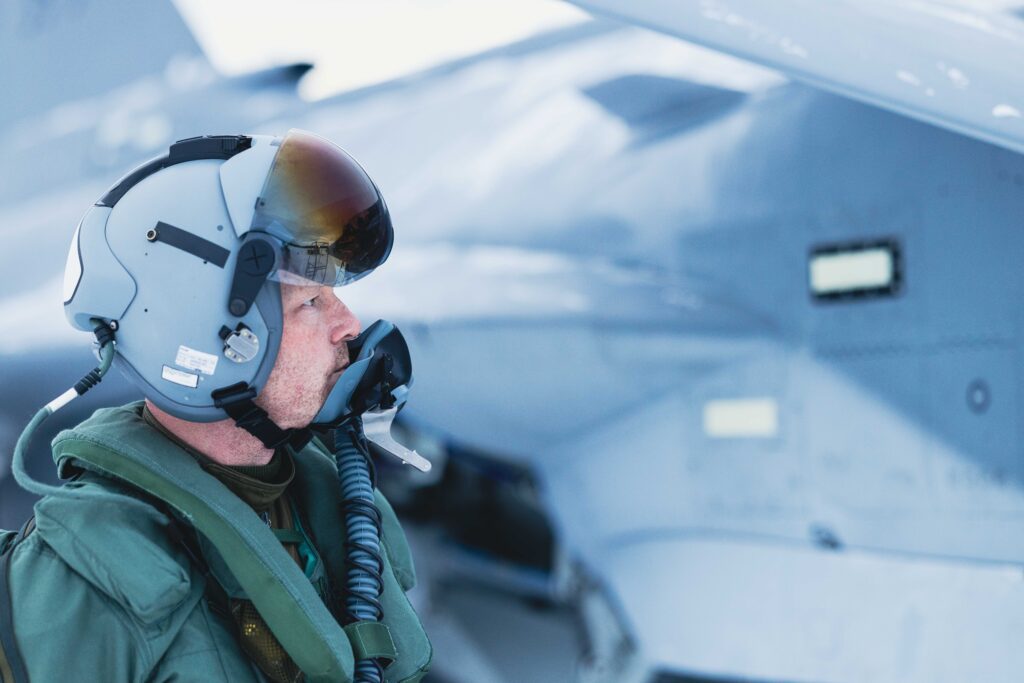
The Meteor weapon system
A further advantage of Gripen, mentioned in the discussions on Ukraine, is the Meteor weapon system, which according to Halmetoja has a range and speed during the missile’s journey through the air that provides a completely different opportunity to combat hostile aircraft at a much longer distance.
“In order to push the enemy away or even fight them, you have to have a long-range weapon capability and in Meteor we have it implemented in Gripen,” he says.
The Meteor system is used by six partner countries that developed the system in pan-European cooperation, with Saab as one of the developers. Nowadays, the missile is also used by a number of export countries in the world. Sweden introduced the system with full capability already in 2016 and was the first to use Meteor.
According to Halmetoya, the fact that many analysts, like President Zelenskyj, now point to Gripen as a suitable fighter aircraft for Ukraine in the war against the aggressor Russia is due to the fact that the specific characteristics of the Gripen system have now been recognized in a completely different way than before.
“We hear daily about Russian long-range attacks on strategic targets in Ukraine. Air bases and strategic targets will be priority one for Russia. If you have the ability to spread and continuously move your resources in a quick and easy way and fly from small airstrips around a country, you can get away from that threat in a very effective way.”
Ground support a challenge
A challenge for all fighter aircraft is ground support, i.e. refuelling and maintenance, which requires a certain amount of organization in addition to flying. Here, too, Halmetoja points to the Gripen’s advantage that the aircraft can be serviced by a small dynamic team consisting of one flight engineer and two to four conscript mechanics.
“This is what is needed to prepare and maintain the aircraft in ten minutes, which is also unique to Gripen,” says Halmetoja, using the English military term agile combat employment to describe the agile approach behind the Gripen system.
Now, it is not primarily Gripen that is being talked about when it comes to support to Ukraine in the form of combat aircraft from the West, but the American F-16. During his career as a pilot, Halmetoja has flown the F-16 several times and describes it as a “classically fine fighter jet that is a pleasure to fly”, but that the plane has completely different design principles for the pilot compared to the Gripen.
“The Gripen system focuses on presenting the information that is important to the pilot at any given moment and filters out information that is less important. The principle of the F-16 is more about presenting all information, all the time.”
The actual mechanical flying of the Gripen is quite easy to learn for a pilot with a background in a reasonably modern aircraft system, Halmetoja says. It requires a number of simulator sessions and a few sessions with the Gripen. Then you are ready to fly the system. Then you have to learn the weapon system, which you do both in a simulator and through flight exercises in the air.

At least three months of training
“To get a basic ability in, for example, the fighter role and to be able to perform basic air defense missions, no more than about three months of training is needed. But if it were to involve the full spectrum of missions including ground attack, reconnaissance and surface targets, it would take longer.”
However, the big time sink for getting a functioning Gripen system in place is not pilot training but aircraft maintenance, i.e. technicians and mechanics, and the supply chain of logistics, replacement units and spare parts. Halmetoja guesses that it could take six to eight months to identify who will maintain and service the system and then train them.
The Gripen is medium size, about the same size as the US F-16, slightly slimmer in design than the F-15, F-18, French Rafale and European Eurofighter. However, the F-16 is significantly heavier than the Gripen, which can carry slightly less weapon load and fuel quantity, and has a slightly shorter range.
“By linking our aircraft and having the ability to cooperate between air, ground and sea forces, and being able to deliver weapons efficiently, we have the key to a very powerful air defense. I would say we have an absolutely world-class combat air system,” he said.
Revolutionary E version
When the E version of the Gripen enters service with the Swedish and Brazilian air forces, Saab has taken a somewhat revolutionary step in the future of combat aircraft technology.
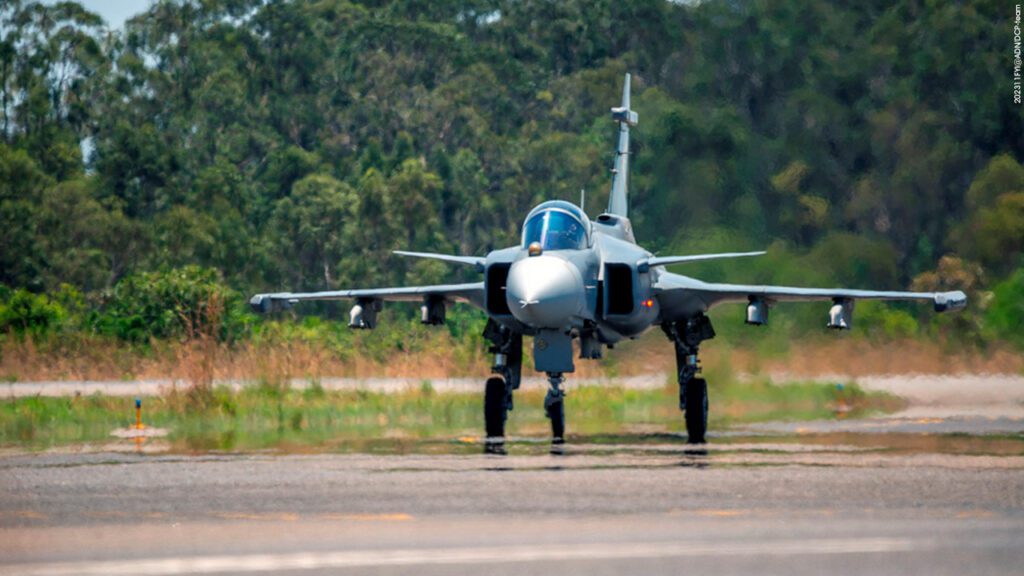
Until now, updating a function on a radar or weapon, for example, has required opening the aircraft’s system computer and then obtaining approval from the aviation authorities to ensure that airworthiness and flight safety are not affected. Such changes to the systems take up to weeks or months to make. And this applies to all fighter jets in the world – except the Gripen E, which has a different avionics, which is the name of the technology that is essential for the safe and efficient operation of the aircraft.
“The clever thing about Gripen E is that with the help of Saab’s brilliant engineers, a new approach has been taken. They have managed to separate the flight-critical functions in one part and the tactical functions in another part. This means that you can update a particular function on your laptop in the morning and then load this software into your aircraft and fly it later in the afternoon or the next day.”
For example, if new radar shapes emerge from the enemy in times of crisis or war that were not there in peacetime, this ability to make changes is needed, he explains. It can also involve major changes to things like sensor performance, decision support and data processing power.
“We call it distributed modular avionics. And this is something unique in the aviation world,” says Jussi Halmetoja.
Thanks to Gripen E’s special avionics, the air forces using the aircraft will be able to make these changes themselves. This gives the air forces control over their own technology and capability, rather than having to go to Saab and ask for permission to do something.
“The Americans have started talking about being able to do this, but Gripen E is already doing it today. It will probably take eight to ten years for them to develop a product. You also have to have an organization and structure that will take care of the design.”
It has taken Saab many years and a lot of blood, sweat and tears to build the system behind Gripen E, he says. But in the coming year and years, both Sweden and Brazil will possess this flight capability, whose technology has attracted interest beyond the defense industry.
“It will be very interesting to see when the Swedish and Brazilian air forces start using the technology, and when we can see the benefits,” says Jussi Halmetoja.
*** Translated by DEFCONPress FYI Team ***
